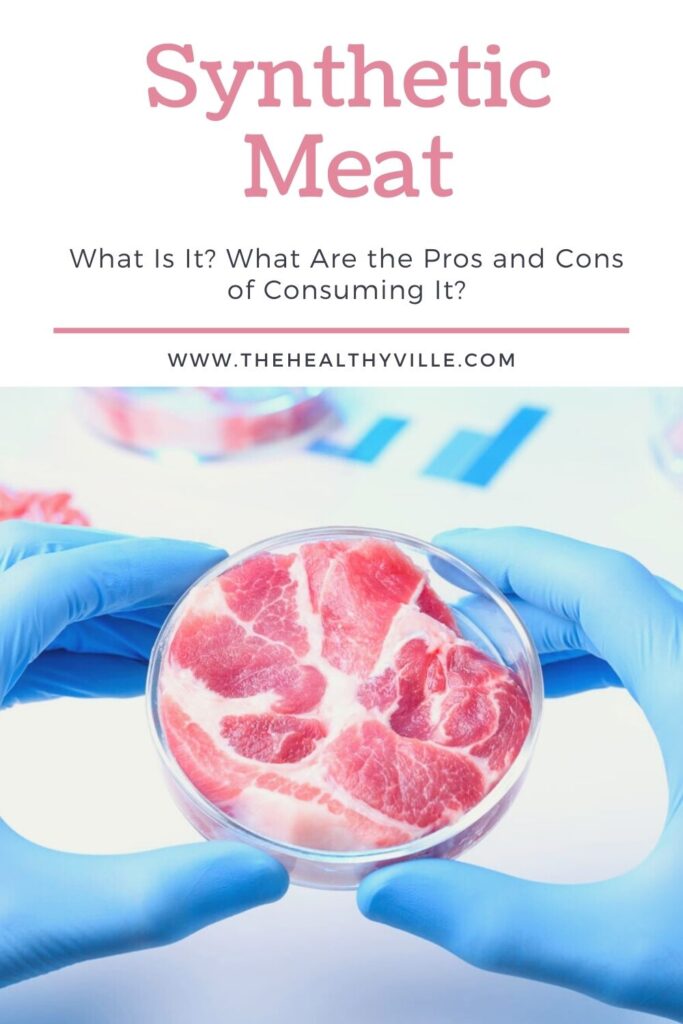Synthetic meat may be on the market soon. This emerging technology generates new considerations about its relationship with health, the environment and food safety.
Vegetable alternatives to meat have coexisted on the market for a long time. And now it is possible that in a short time they will share space with synthetic or laboratory-produced meat.
But in this case it is not about vegan options, since its production is based on cells extracted from an animal. Find out what is it exactly and what the pros and cons of consuming it are.
An alternative to traditional meat production
Per capita meat consumption has been increasing since 1960 globally, although with notable differences between countries. Its production has a strong impact on the environment and health. And this has prompted experts to make new recommendations on the matter in recent years.
Consumers have also started to make changes in their meat-eating habits. In Spain, for example, in the last two years the market for vegetable products has increased its sales by 48%. In addition, it increases its offer and variety, both in supermarkets and in restaurants
For the moment, synthetic meat is presented as a viable and positive alternative to reduce the consumption of conventional animal meat. But the project is still at a very early stage. Its commercialization has been approved, for the moment, in Singapore.
There are some doubts about how the public will accept these new products. As a general rule, everything perceived as unnatural generates some reluctance. In addition, cultural, ethical and religious barriers may appear that must be taken into account.
What is synthetic meat?
Synthetic meat is a product created in the laboratory from animal stem cells. Scientists extract these cells from the thigh, either chicken, cow or pork, and multiply them in a controlled environment. To do it the right way, other components are added, such as myoglobin, connective tissue or fat.
The technology used for its production is still under development. For this reason, it is difficult to know exactly what the commercial production methods and the exact final composition will be.
The aspiration of those responsible is to obtain meat, as similar as possible to that of traditional production. This concerns both the texture and variety of the final products, as well as their biological and nutritional composition.
What impacts does its production have on the environment?
Currently, one of the main global food challenges is the consumption of meat and its intensive production. Possible human health implications are known to exist. But in addition, it generates a challenge at the level of sustainability and footprint on the environment.
The non-governmental organization Greenpeace, with a presence around the world, has pointed out these big problems. Among them are the grabbing of arable land, the contribution to climate change and water pollution. It also implies economic concentration, lack of respect for animal welfare and loss of biodiversity.
Faced with this reality, the promoters of synthetic meat present it as a future solution. They claim a lower environmental impact in their production, but there are still many unknowns and doubts.
There are few studies beyond the calculation of greenhouse gas emissions. As an example, Lynch and Pierrehumbert conclude that “it is not yet clear whether cultured meat production would provide a more climate-sustainable alternative. The cultivated production does not grant a license for the unlimited consumption of meat”.
Advantages of cultured meat
The idea of the promoters of this type of products is to achieve a more friendly meat with the environment and human health. In their favor they defend the following positive aspects:
- Nutritional composition adapted to prevent the negative impact of red meat on health.
- Greater animal welfare, as scientists need a very small sample of an animal for further development. Furthermore, the cell extraction process is minimally invasive.
- Disappearance of the use of antibiotics in livestock, thereby reducing bacterial resistance.
- Less environmental consequences in gas emissions, use of water and land.
- Decrease in food infections due to intestinal bacteria, such as Salmonella or E. coli.
The downsides
Beyond the debate about its impact on the environment, there are other controversial points in the production and possible consumption of meat processed in vitro. Some of the most important are discussed in an analysis published by the journal Nature Communications and can be summarized in the following sections.
Economic problems
The economic viability of meat production in laboratories is one of the controversial points. As an example, the University of Maastricht developed a hamburger in 2013 with a cost price of $ 280.40 per unit. On a large scale, the In Vitro Meat Consortium estimates that this price could be twice that of chicken meat
Organoleptic characteristics
There is a real difficulty in obtaining a taste and texture similar to that of conventional livestock meat. Estimations are that it will be one of the key points to obtain the adherence of new consumers.
For this, it is necessary to reproduce muscle and adipose tissue, in addition to adding some flavoring and texturizing ingredients. The first prototypes imitate processed meat products, such as hamburgers or sausages, since the difficulty to emulate classic cuts is much higher.
Nutritional values
The nutritional content of synthetic meat also is not familiar to the public at the moment. It seems clear that some compounds, such as vitamin B12, cannot be provided. However, there is the possibility to supplement the final products or to carry out genetic modifications.
Health implications
The final nutritional composition of laboratory meat and its method of production can affect human health and public health. This fact has to do with the appearance of animal-borne diseases, infectious, diet-related health problems (colorectal cancer and cardiovascular problems) or lack of nutrients.
Long term safety
The production of this type of meat is based on accelerated cellular reproduction. This is reason to raise questions about the food safety of stem cell products. Likewise, we must add growth factors and other agents that are added, whose effect on the body has not been tested.
Impacts on livestock
There is a real risk of ending livestock production, in the words of the Professor of Animal Production, José Antonio Mendizábal. Not only intensive breeding, but also traditional or extensive. This is responsible for preserving indigenous breeds, keeping forests clean, populating rural areas and producing quality and nutritious organic food.
A new technology with pros and cons
The growing demand for meat products poses a global challenge. Laboratory meat is an alternative for those consumers who want responsible options, without making changes to their diet.
But at the moment it is difficult to quantify the advantages and problems of its production, marketing and consumption. As well as the possible impacts on the health of people, animals and the environment.
In addition, there are a large number of questions of an ethical, religious and cultural nature that will have a direct impact on public acceptance. For the moment, there are other alternatives that make it possible to face the challenge posed. You can choose to reduce the presence of meat through plant alternatives and promoting other extensive farming systems.
Don’t forget to SHARE everything you know about synthetic meat with your friends and family on your social networks!

